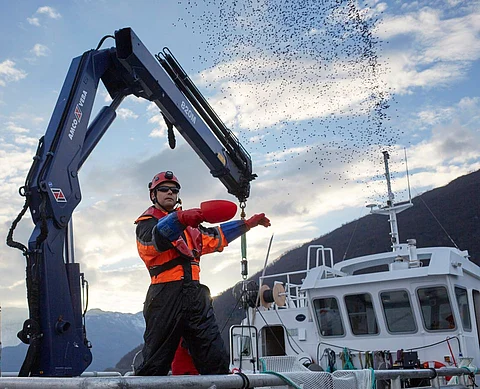

"The report emphasizes how important the supplier industries have become for value creation in the Norwegian seafood industry. The suppliers create jobs and value along the entire coast, and contribute with crucial innovation that strengthens the industry's competitiveness," said lead researcher Audun Iversen.
Photo: Audun Iversen, Nofima.
A new report from Norwegian research institue Nofima highlights a significant shift in the Norwegian seafood sector, revealing that supplier industries now employ more people than the fisheries and aquaculture sectors combined.
According to the report, 46,300 individuals work in industries supplying the seafood industry, surpassing the 40,000 employed directly within fisheries and aquaculture.
Aquaculture has played a key role in driving the growth of suppliers, the Nofima researchers say, with a staggering 71% of the aquaculture industry's turnover is dedicated to purchasing goods. As aquaculture facilities have become increasingly larger and more technologically advanced, this has generated a strong market for suppliers providing equipment, services, and technology to address biological challenges.
Meanwhile, Norway's fishing fleet has undergone significant restructuring, resulting in fewer, but larger and more advanced vessels. This has created a need for new construction and modernisation, which in turn has resulted in significant assignments for the shipyard industry, according to Nofima.
Of those employed in supplier industries, 33,000 are linked to aquaculture, while 13,300 work in fishing-related supply roles.
The supplier industry encompasses a broad spectrum of companies, ranging from traditional fishing gear manufacturers and shipyards to high-tech firms developing advanced solutions for aquaculture.
The rising demand for innovations such as disease control technologies, lice skirts, and laser systems, as well as the growth in well boat capacities, has driven significant job creation, the report shows. Additionally, service providers in areas such as transport, logistics, insurance, and finance have flourished in this growing sector.
Audun Iversen, the report’s lead researcher, noted that much of the seafood industry’s innovation occurs within supplier companies.
"The biggest innovation environments are found in feed producers and in the vaccine/fish health sector, but there are also many small and medium-sized companies that contribute with new technology and new solutions," Iversen said, in a Nofima press release.
Importantly, these suppliers are spread throughout Norway, from coastal towns to larger cities and regional centers.
"The report emphasizes how important the supplier industries have become for value creation in the Norwegian seafood industry. The suppliers create jobs and value along the entire coast, and contribute with crucial innovation that strengthens the industry's competitiveness," Iversen explained.
The Norwegian fishing fleet has undergone significant restructuring. This has resulted in fewer, but larger and more advanced vessels, the report states.
Photo: Kristin Beate Hansen / Nofima.
While the report emphasizes the positive impact of the supplier industries on job creation and value generation along Norway's coast, it also highlights challenges.
These include uncertainty surrounding fisheries quotas and the implementation of Norway's ground rent tax in aquaculture, which have led to layoffs and bankruptcies in some segments of the supplier sector.
"We see a certain amount of uncertainty related to future investments in both the farming industry and fisheries. This naturally affects the supplier industry. They are crucial for the seafood industry's success, and we must recognize that with the challenges they face, the industry and the authorities must work together to ensure continued growth and innovation," Iversen said.
The report notes that in 2022 alone, the seafood industry spent NOK 130 billion (€11.1 billion / $12.2 billion) on goods and services. This total includes NOK 110 billion spent on operations and a further NOK 20 billion on investments, underscoring the central role of the supplier industry in the sector’s continued expansion.
The study is part of a broader research initiative funded by the Norwegian Fisheries and Aquaculture Industry’s research funding (FHF) and provides valuable insight into the evolving dynamics of Norway's seafood industry.
